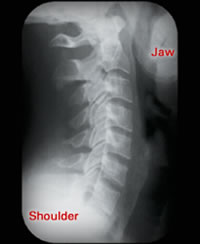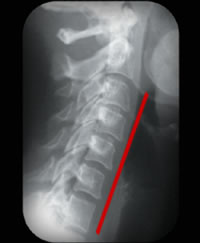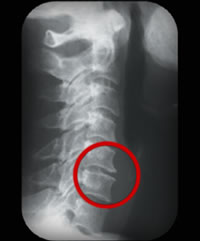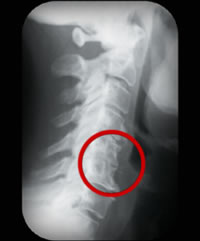Spinal Decay
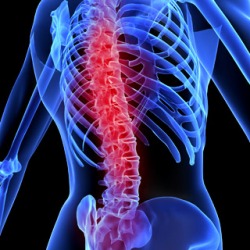
Spinal Decay is a slow degenerative process that occurs due to uncorrected spinal stress. Spinal stress which results in subluxations, can occur from many things such as trauma, accidents, poor posture, excess weight, lack of exercise, poor diet, improper lifting or every day stress. Just like tooth decay early detection and treatment are critical in the treatment of spinal decay. If the subluxations go uncorrected; the decay process begins. The first phase of degeneration is a loss of the spinal curves or a decreased ability to turn or bend. For example, the neck region is suppose to have a nice curve forward this allows proper support of the head without putting to much stress on the musculature of the neck. If this curve is lost people often experience headaches, neck pain, migraines, shoulder tightness. When one area of the spine loses motion other areas of the spine have to compensate for injured area which causes increase stress and pressure on that area which may lead to more damage. Many times you end up with a domino effect of health problems!
The second phase of decay is when the body tries to stabilize and immobilize the affected spinal joint. The body does this by putting calcium on the affected joints, ligaments, and connective tissue. As with cancer or high blood pressure, pain or other obvious symptoms many times are absent at this point.
During the third phase of decay the integrity of the spine is severely compromised. More calcium and bone is deposited around the spinal joints and the disc may decay also. The movement of this area is often limited and many times people begin to see more neurological symptoms.
One of the goals of chiropractic care is to locate the areas of the spine that are not working properly and through the adjustment restore proper motion into the area. This not only allows the nerves to work properly but also with the spinal joint now moving freely you are preventing part of the decay process. Just like you go to your dentist for regular checkups to prevent tooth decay a regular visit to your chiropractor can prevent spinal decay.
The second phase of decay is when the body tries to stabilize and immobilize the affected spinal joint. The body does this by putting calcium on the affected joints, ligaments, and connective tissue. As with cancer or high blood pressure, pain or other obvious symptoms many times are absent at this point.
During the third phase of decay the integrity of the spine is severely compromised. More calcium and bone is deposited around the spinal joints and the disc may decay also. The movement of this area is often limited and many times people begin to see more neurological symptoms.
One of the goals of chiropractic care is to locate the areas of the spine that are not working properly and through the adjustment restore proper motion into the area. This not only allows the nerves to work properly but also with the spinal joint now moving freely you are preventing part of the decay process. Just like you go to your dentist for regular checkups to prevent tooth decay a regular visit to your chiropractor can prevent spinal decay.
|
Spinal Decay can occur anywhere in the spine but for demonstration purposes we will show you the process in the cervical spine (neck). This picture is what we call textbook "normal." There is a nice smooth forward curve to the neck. The spaces between the spinal bones are where the disc are. The spaces should be equal throughout the neck. The space should also be large enough to allow a nice opening for the nerves to exit from the spine. The edges of each of the spinal bones should also be well-defined with smooth margins.
|
|
This is the first phase of degeneration. The first noticeable change on x-ray is the lost of your cervical curve. This loss of curve puts extra stress on the muscles of your neck causing them to tightening and develop chronic tension. The loss of curve will also limit your bending and turning of your head to some extent. The disc spaces may be reduced in size or may develop a wedge shape both of these narrow the opening for the nerve increasing the tendency it will become irritated. Depending on your body's ability to adapt you may or may not experience pain during this phase. With chiropractic care you can prevent your spine from decaying even further.
|
|
If the problems are not corrected during the first phase of decay then your body will proceed to the second phase of decay. You still have loss of your normal curve and the disc spaces in certain areas may decrease even more. It is in this phase the spinal bones no longer have smooth margins. The body begins to deposit calcium and form bony spurs on the margins. These bony spurs are irreversible. You may notice even more decrease in the movement of your neck.
|
|
If still left uncorrected the body will proceed to phase three of decay. The disc spaces are even more reduced an barely visible. Adjacent areas of your neck begin to fuse and they loose their individual motion. This process takes years and amazingly depending on the individual pain and other symptoms may not be present all the time. Many times people feel fine one day and then the next day the symptoms suddenly appear without a cause. However. with these x-rays you can see this process of injury has been going on for a very long time. This is why it is important to have your spine checked! The process of decay may have been present for a while before you feel it!
|
